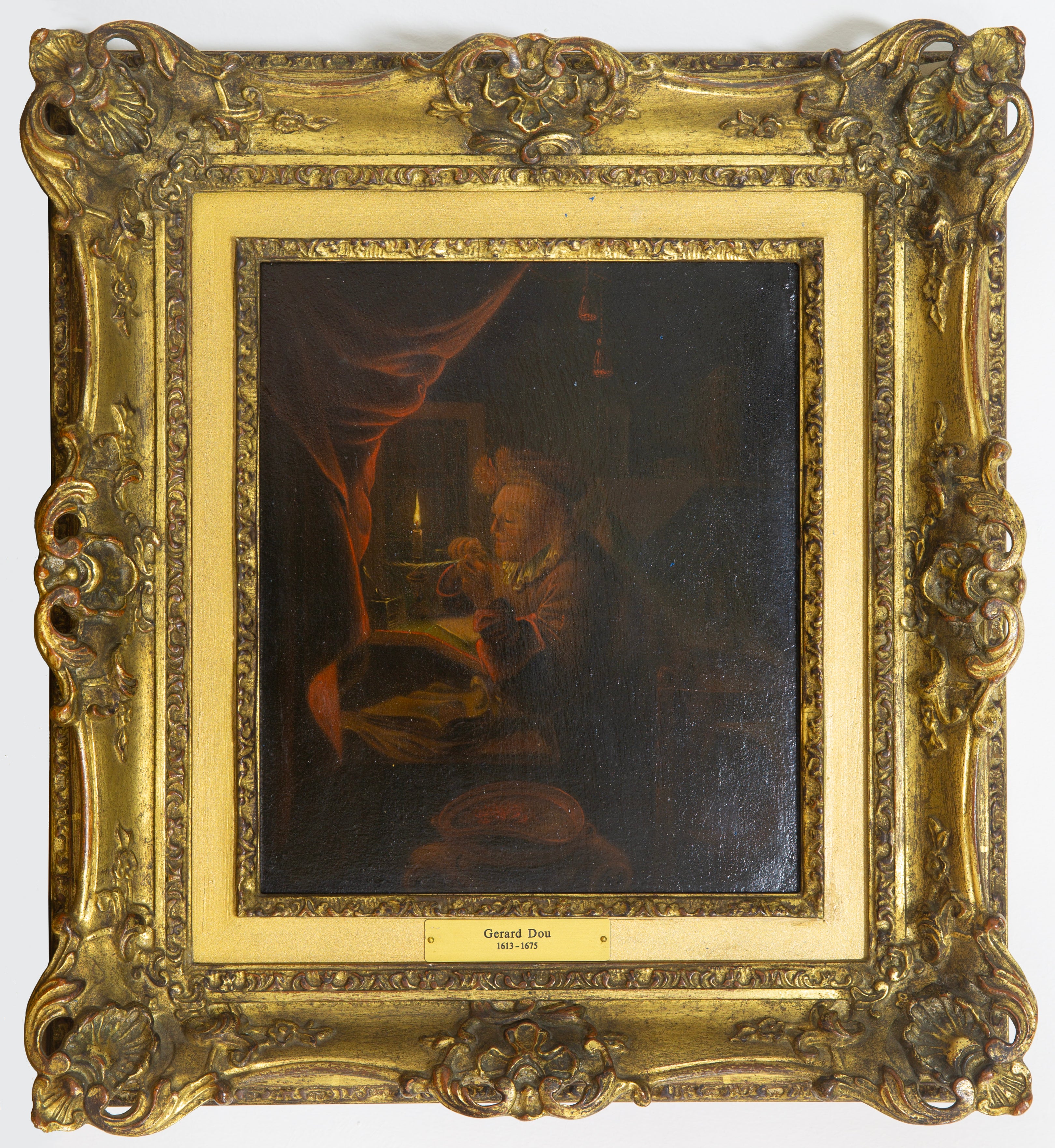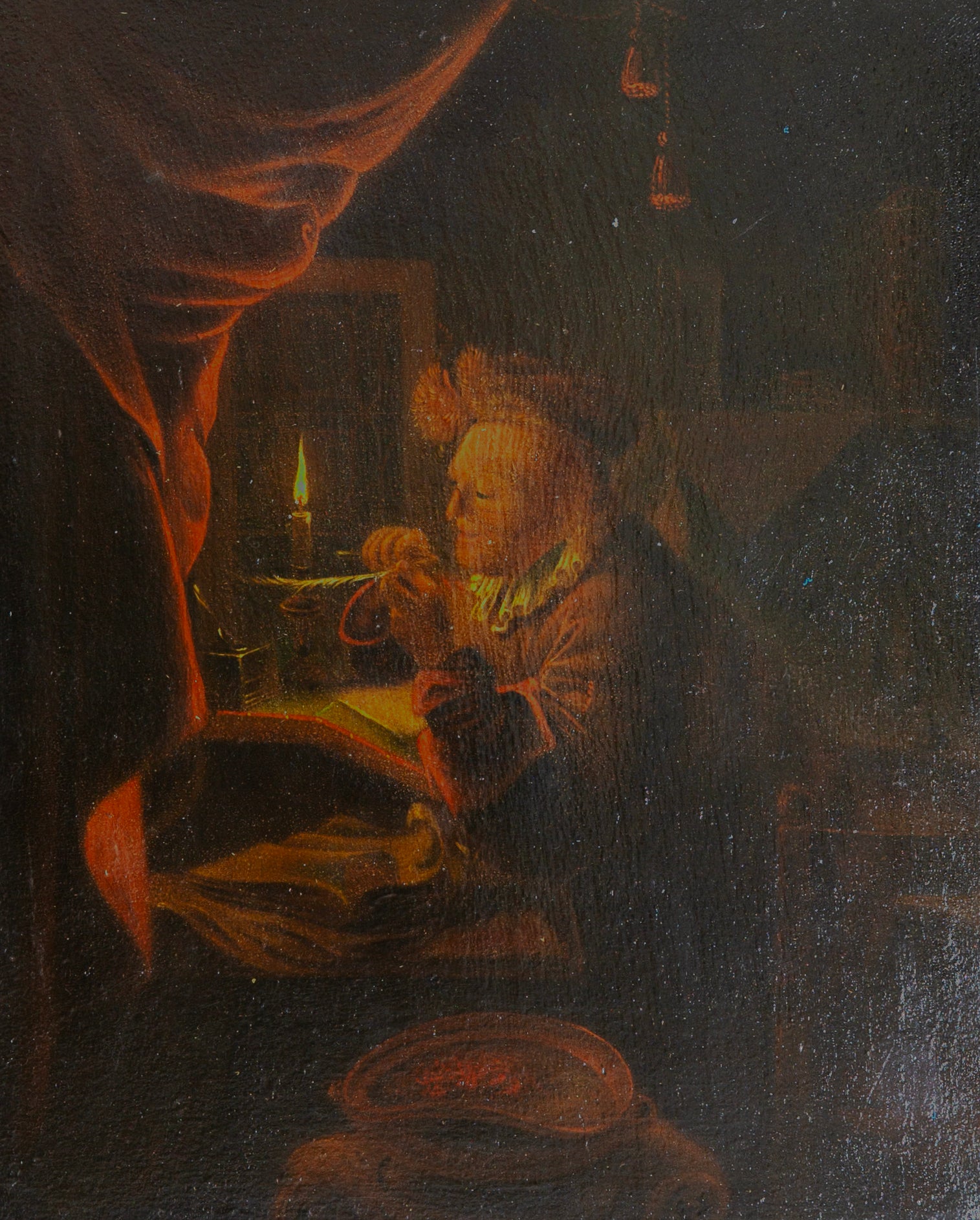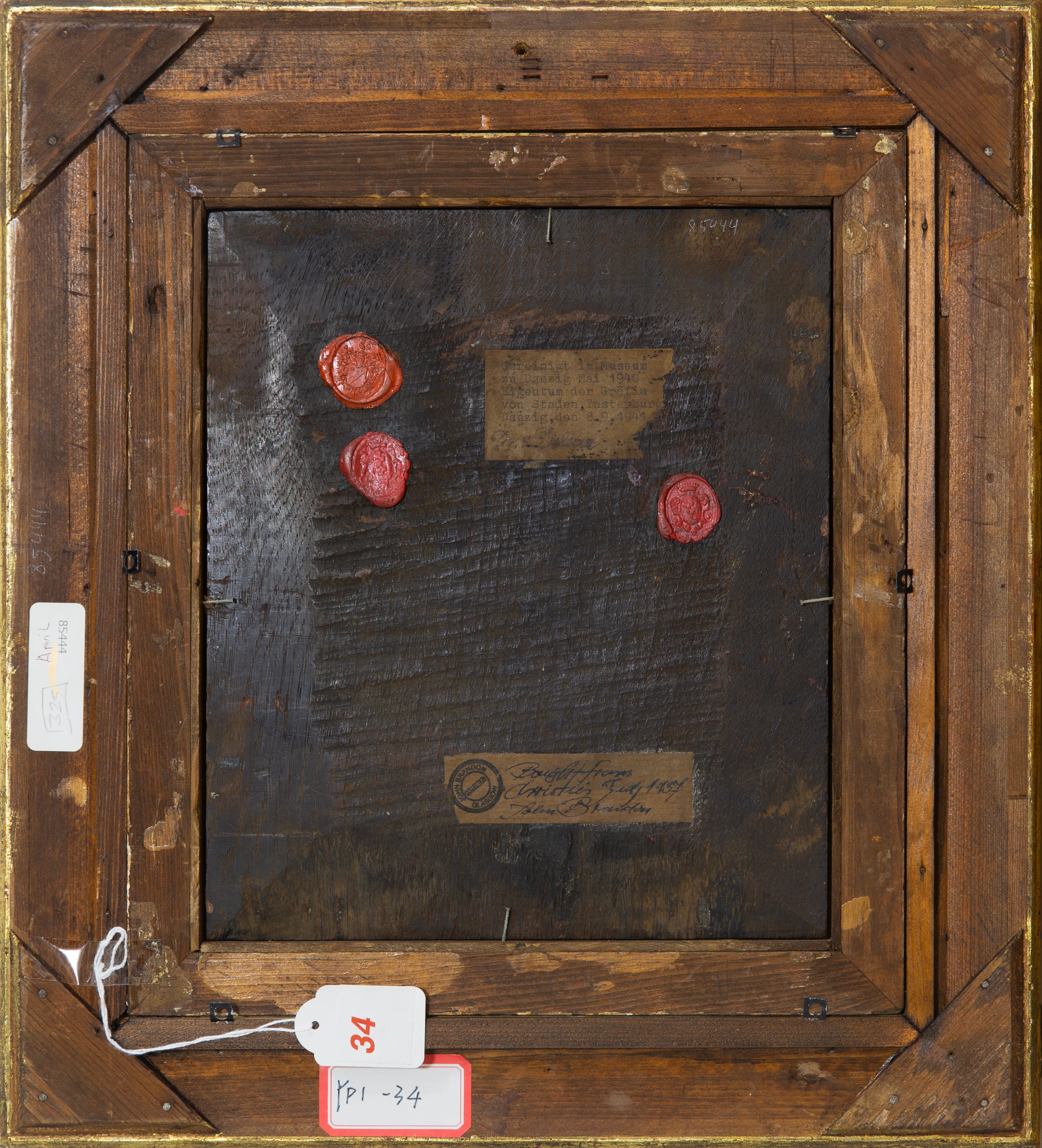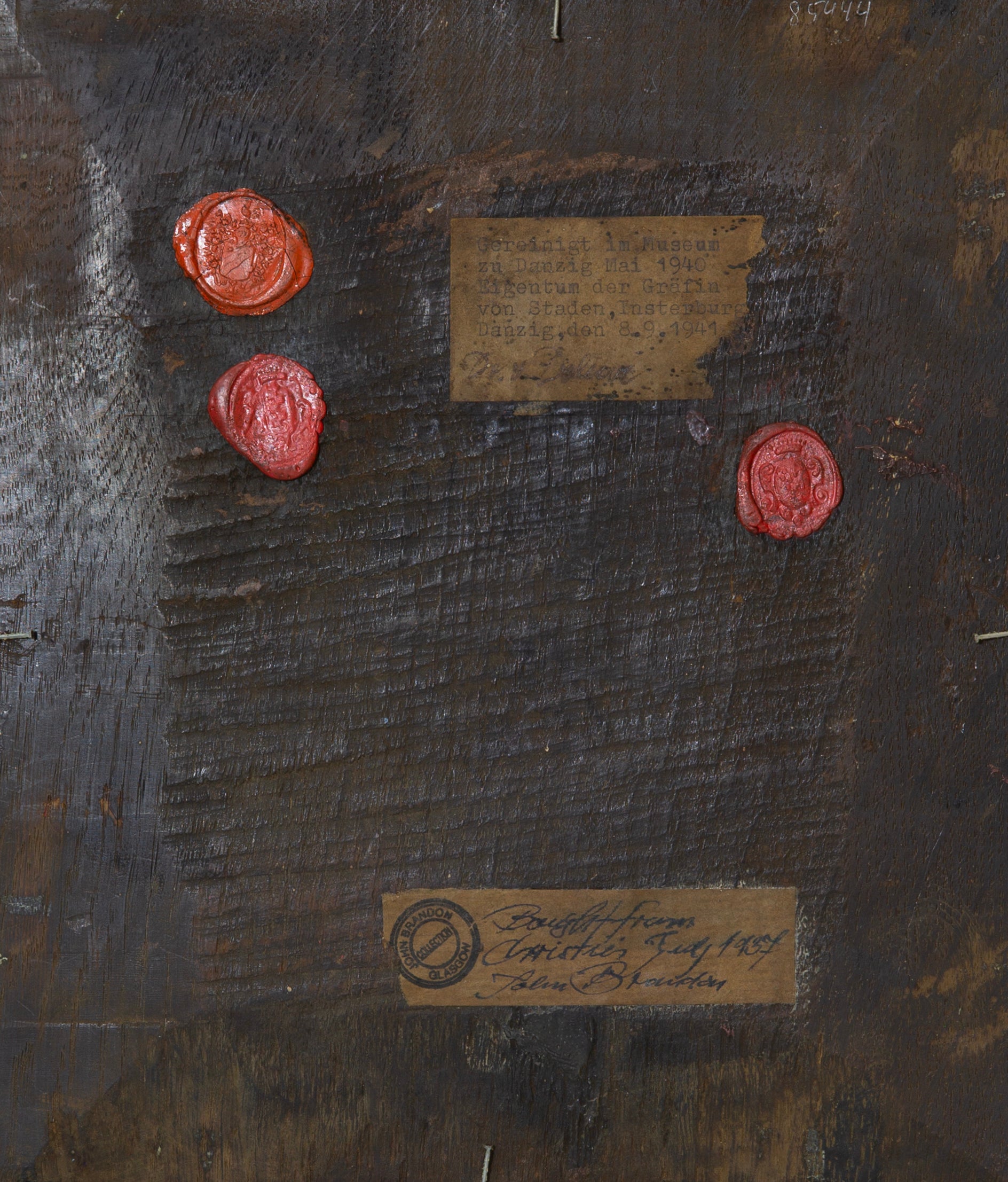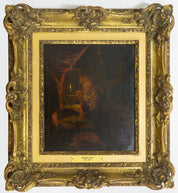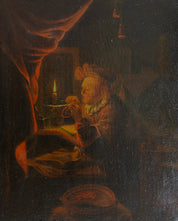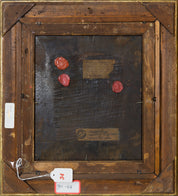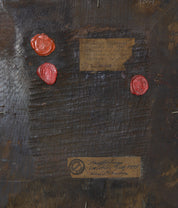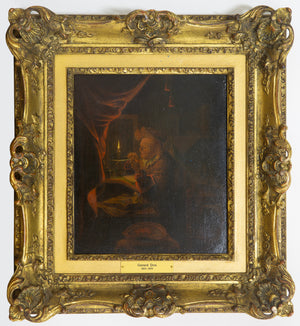Notary in the Countryside
Gerald Dou
Artwork Details
Artwork Description
Title: Notary in the Countryside
Artist: Gerard Dou (1613–1675)
Date: n.d.
Medium: Oil on panel
Dimensions: 9.8 x 8.5 in (25 x 21.5 cm)
Artwork Identification
This intimate, candlelit interior scene Title:d Notary in the Countryside is attributed to Gerard Dou, one of the foremost Dutch painters of the 17th century. Executed on panel, the painting exhibits the characteristic finesse and meticulous detail that defined Dou’s work and that of the Leiden Fijnschilders, or “fine painters.”
Artistic Style and Influences
Gerard Dou was a pupil of Rembrandt, and early influences of his master are evident in Dou’s nuanced treatment of light and his psychological sensitivity to his sitters. However, Dou soon developed his own distinctive style, favoring highly detailed domestic genre scenes with jewel-like precision. This panel reflects Dou’s refined chiaroscuro and layered glazing technique, with a warm candlelit ambiance enveloping the notary figure.
Historical Context
Born in Leiden, Dou played a pivotal role in the Dutch Golden Age of painting. His work was celebrated across Europe and patronized by collectors who admired his exceptional technique. This scene reflects the 17th-century fascination with professional figures, quiet interiority, and the moral symbolism embedded in daily life.
Provenance
The reverse bears provenance labels and red wax seals.
Label 1: "Gereinigt im Museum zu Danzig Mai 1940 / Eigentum der Graf von Staden, Insterburg / Danzig, den 8.9.1941."
Label 2: Stamped from the John Brandon Glasgon Collection, reading "Bought from Christie's July 1937."
Provenance documentation can be provided upon contact.
Condition and Conservation
The surface shows fine craquelure and general darkening of pigments, with some yellowing consistent with the aging of oil on panel. The integrity of the painting remains intact, and the work is overall in very good condition.
Artistic Significance
As one of the key founders of the Leiden Fijnschilders and a pioneer of Dutch genre painting, Dou's works were highly valued by aristocrats and royalty alike. This piece exemplifies his extraordinary attention to texture, mood, and the domestic narratives of 17th-century life, making it a historically and aesthetically significant work.

